A PAIR OF NEOCLASSICAL OAK BENCHES WITH WELL CARVED MONOPODIAE SUPPORTS Possibly French. Second Quarter Of The Nineteenth Century. Measurements: Width: 43 1/4″ (109.8 cm) Height including cushion: 20 3/4″ (52.7 cm) Depth: 16 3/8″ (41.5 cm).
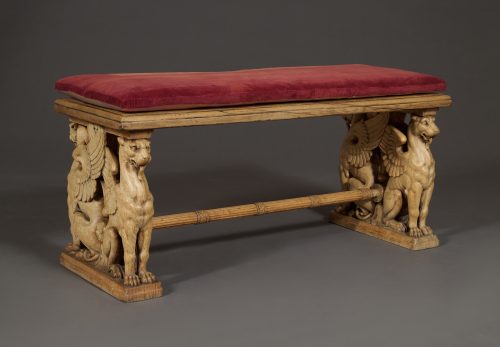
Research
Of oak. Each with rectangular seat with molded edge supported by trestle ends carved with outward facing winged lions seated on a stepped plinth base, joined by a turned and carved stretcher. Probably originally with square shallow pad feet.
These well modeled, small-scale but powerful benches are closely related to monopodiae supported items from the ancient Roman world, recalling the form of a cartibulum, an oblong marble table that would stand in the atrium of a Roman home to display objects of worth. The supports of the table, or trapezophori, were often carved as two griffin or chimerical monopodiae, standing back to back, with ornate grotesque or foliate relief between them, as seen in a pair of addorsed griffin table ends in the Vatican Museum collection (figure 1).
The benches reflect the “archaeological” fashion introduced in France towards the end of the 18th century. The French monarchal change from republic to empire ushered the simultaneous shift from the decorative influence of ancient Greece to that of ancient Rome. The “French version of antiquity” was “architectural and volumetric, founded largely on antique stone artifacts”1 leading to a tendency for heavier models, a substantiveness achieved in part by the use of weighty monopodal bases. The style was popularized and well-circulated by publications like Charles Heathcote Tatham’s 1799 collection of drawings, Etchings of Ancient Ornamental Architecture Drawn from Originals in Rome, which contained examples delineating leonine supports of ancient sarcophagi.
Here, the present benches have an inventive quality whereby the lions’ wings overlap. This feature tends to the view that ancient design precedent has been eschewed in favor of an experimental quality more indicative of the 1830s and 40s. Furthermore, the geometric carved collars that decorate the stretcher are more in line with design pattern books of this period such as Carl Bötticher’s Ornamenten-Buch zum practischen Gebrauche für Architecten, Decorations- und Stubenmaler, Tapeten-Fabrikanten u.s.w. (1834-38).
The choice of finely grained oak adds to their weighty, monumental appearance. Oak was the timber of choice for many fine pieces of the early 19th century, both in England and France, where there was a pronounced fashion for the celebration of indigenous woods with makers such as George Bullock and Jacob Desmalter employing this wood. The high level of craftsmanship and secondary foliate detailing further indicate they are of likely French origin.
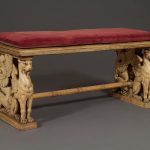

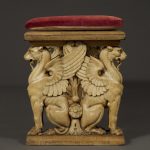

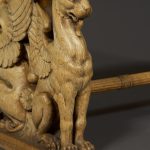
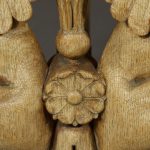

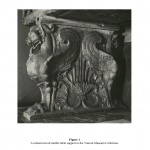
Comments are closed.